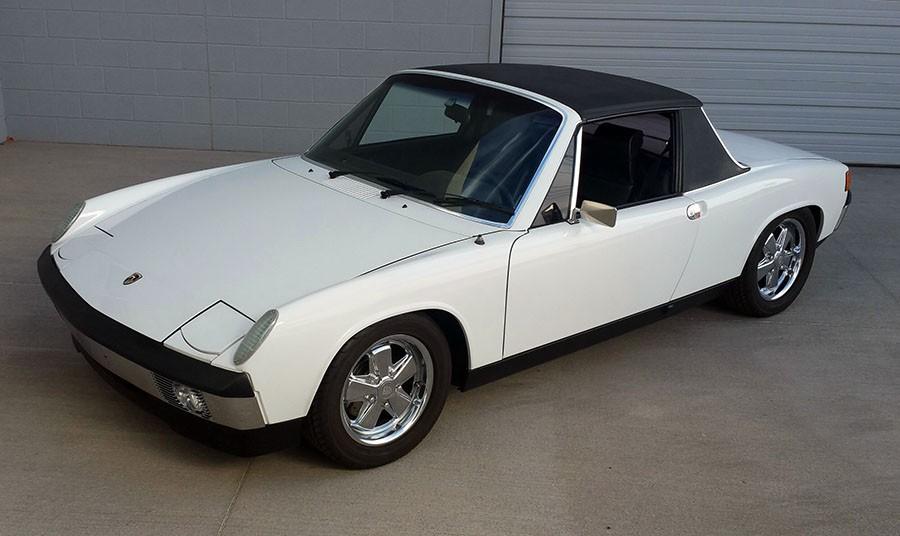Porsche 914/4 (1.8 L) (1974 – 1976)
For 1974 a 1.8-liter engine replaced the 1.7 and had a new type of electronic fuel injection called AFC (air flow control), or ‘L’ Jetronic. This same basic injection was used on 911s in the late-’80s. Unfortunately, due to emissions regulations, the 1.8 made just 76 hp, less than the smaller engine it replaced. The standard steel wheels were changed to 5.5-inch wide VW units. Rubber bumper guards now adorned the rear and the headlight surrounds were changed from white to black plastic. US cars got the infamous ignition seat-belt interlock buzzer. This was also the year of the limited edition series, for which Porsche implemented cosmetic flourishes to try and boost falling sales. A black car would have yellow accents on the Mahle wheels, the bumpers, the rocker panels, and a yellow negative “PORSCHE” script along the door bottoms. There were also green and orange variations on cars painted white.
1975 really marked the beginning of the end for the 914. Sales kept falling, the exchange rate kept getting worse (making cars more expensive in the US), VW was switching to water-cooled engines (it supplied the air-cooled flat fours), US emissions rules now forced air pumps and more restrictive exhaust systems onto the already detuned engines, and finally big, ugly crash bumpers were necessary to meet crash standards. The bumpers weighed more as well, further reducing performance. In California, catalytic converters were now required.
By 1976 the 914 was only sold in the US, and the 1.8-liter engine was dropped since VW no longer made it. As a final act of cheapening the car, the “2.0” badge on the rear became a decal instead of the former plastic emblem.











